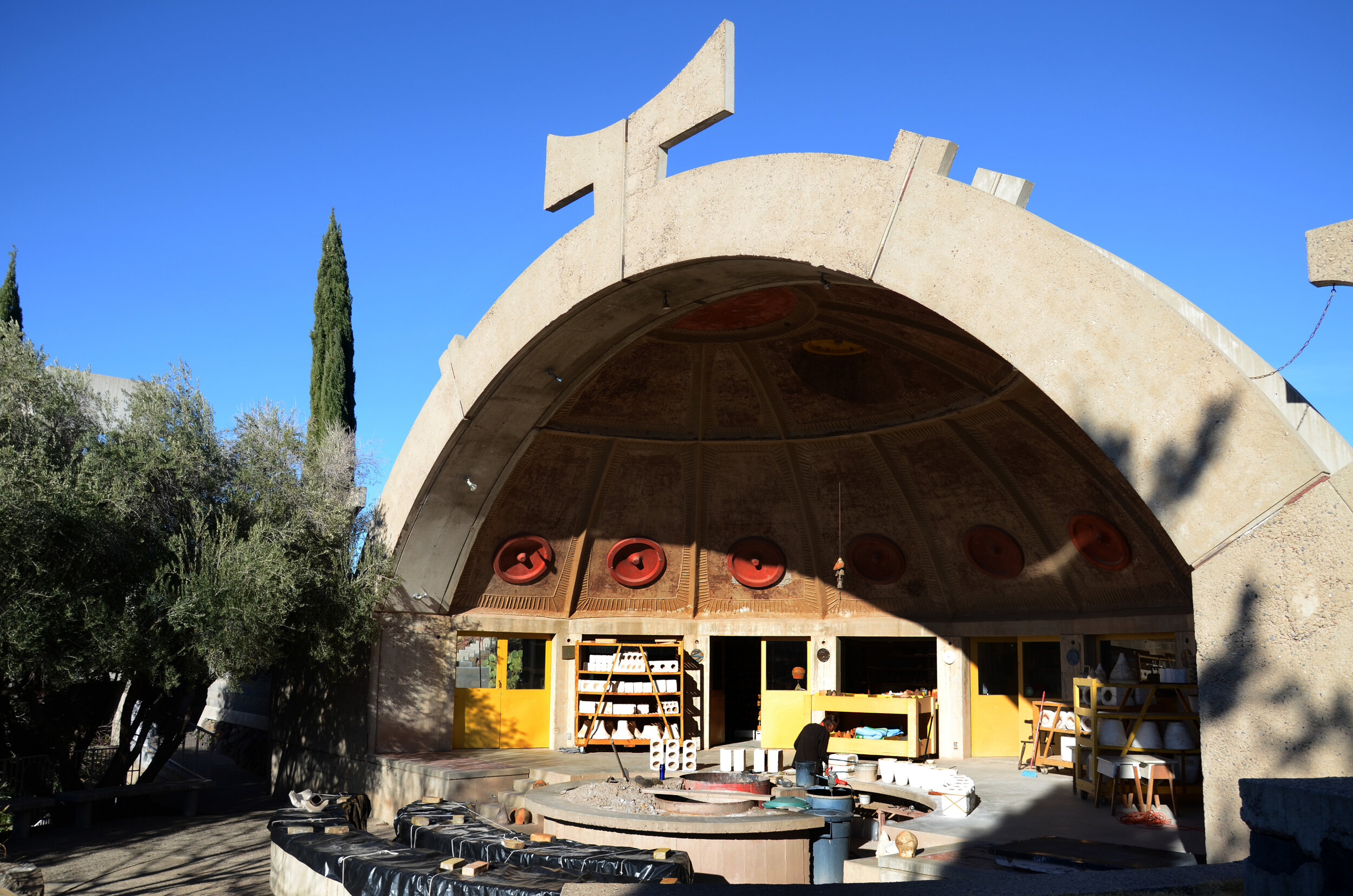Location: Yavapai County, Arizona, USA
Architect: Paolo Soleri
Construction: 1970 - Ongoing
16 Photographs
I don’t usually post consecutive buildings from the same trip, no less two buildings separated by so little time and distance, but for some reason this seems to have happened and I’m going to roll with it. I was first introduced to Arcosanti, by my other influential tutor and friend, Sean Pickersgill, a few years into my architectural education.
I’ve always been fascinated by the concept of Arcosanti and in finding ourselves travelling through the deserts of Arizona, Utah and New Mexico, it was an obvious choice along the way. It’s an extraordinary place, utopian in it’s vision and proposed scale, and while that scale is yet to be realised, the experimental nature of it is still incredible. An experimental city in the desert, Soleri’s vision was originally for a vast sprawling city rolling down into the valley in which it is situated and (eventually) creeping out the sides into the desert. While the extend of that city is yet to be realised (and may never be), there is enough there to see what was in his minds eye. It has echoes of the hill towns of his native Italy in the narrow tall streets, well suited to the hot climate, with the platforms and open squares scattered throughout, with big roofs over other public spaces, providing a variety of different urban conditions interlaced with living, work and play.
The handmade, unplanned, and experimental nature of the construction techniques means that the details woven during the process means that there are layers and layers of richness embedded into each part of every building. The unpretentious rough nature of the buildings means that the residents have been able to adapt and personalise the spaces in a way which reflects the organic nature of their existence, both human and urban.
We were lucky enough to be able to stay here for a couple of nights and to have essentially free run of the place day and night. This led to some extraordinary games of light painting, which will perhaps be posted at a later date.
The buildings of Arcosanti sit so comfortably in the landscape, hewn from the very earth on which they are built, in a similar but different way to Taliesin West. It really is something else, unlike anything I’ve ever seen and unlikely to ever see again.
HWLK






